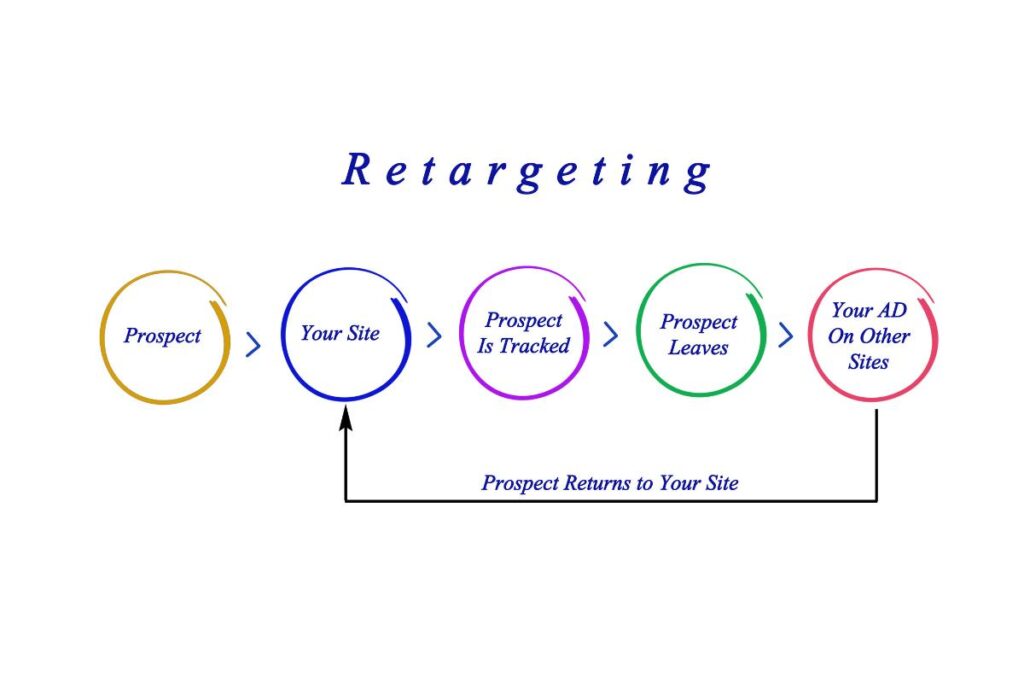
In today’s competitive digital landscape, retargeting ads have emerged as a powerful strategy to re-engage lost visitors and convert them into loyal customers. If your website receives high traffic but struggles with low conversion rates, implementing an effective retargeting strategy can bridge the gap and drive measurable results.
What Are Retargeting Ads?
Retargeting ads are online advertisements displayed to users who have previously visited your website but left without completing a desired action, such as making a purchase or filling out a form. By placing a tracking pixel or cookie on your site, you can follow these users around the internet and show them tailored ads designed to bring them back.
This form of advertising keeps your brand top-of-mind and encourages return visits, ultimately increasing the likelihood of conversion.
Why Retargeting Is Essential for Your Business
Statistics show that only 2% of visitors convert on their first visit to a website. Retargeting allows businesses to reach the remaining 98% who showed interest but left without engaging. Here’s why retargeting should be a key part of your marketing arsenal:
- Increases brand recall by repeatedly exposing potential customers to your messaging.
- Targets warm leads rather than cold audiences, making conversion easier.
- Improves ROI by focusing ad spend on high-intent users.
- Supports cross-selling and upselling for existing customers.
Types of Retargeting Ads
To launch an effective campaign, it’s important to understand the various types of retargeting ads available:
1. Pixel-Based Retargeting
This is the most common type, using a JavaScript code (pixel) placed on your website to anonymously track visitors. Once they leave your site, the pixel triggers your ads to appear as they browse other websites.
2. List-Based Retargeting
This method uses contact information you already have, such as email addresses, to create a custom audience. Platforms like Facebook and Google allow you to upload these lists and show ads directly to those users.
3. Dynamic Retargeting
Dynamic retargeting takes personalization a step further by showing ads based on the exact products or pages the user viewed on your site. This is highly effective for e-commerce brands looking to recover abandoned carts.
4. Search Retargeting
Unlike other forms, search retargeting targets users based on keywords they’ve searched, even if they haven’t visited your site yet. This is ideal for capturing interest during the research phase.
How to Set Up Retargeting Ads Successfully
Launching a successful retargeting campaign involves several critical steps:
Step 1: Define Your Audience Segments
Not all visitors should be retargeted the same way. Segment your audience based on behaviors such as:
- Pages visited
- Time spent on site
- Products viewed
- Cart abandonments
Segmenting allows you to deliver highly relevant ads that match user intent.
Step 2: Choose the Right Platform
Popular platforms for retargeting ads include:
- Google Ads Remarketing (Display Network, YouTube, Search)
- Facebook Retargeting Ads
- Instagram Retargeting
- LinkedIn Retargeting for B2B audiences
- Twitter Retargeting
Select platforms where your audience is most active to maximize exposure.
Step 3: Create Compelling Ad Creative
Your retargeting ads need to stand out to recapture attention. Use:
- Eye-catching visuals
- Clear call-to-actions
- Personalized messaging
- Limited-time offers or discounts
- Testimonials or reviews to build trust
Avoid generic ads; personalization increases click-through rates by 2-3x.
Step 4: Set Frequency Caps
Bombarding users with too many ads can lead to ad fatigue and annoyance. Set frequency caps to control how often your ads appear to the same user within a given time frame.
Step 5: Monitor and Optimize
Track key performance indicators (KPIs) such as:
- Click-through rates (CTR)
- Conversion rates
- Cost per acquisition (CPA)
- Return on ad spend (ROAS)
Regularly analyze data to refine targeting, pause underperforming ads, and allocate budget toward the best-performing segments.
Best Practices for Retargeting Ads in 2025
To stay ahead of the competition, follow these best practices for retargeting ads:
- Use sequential messaging: Show different messages based on how long ago the user visited your site or what actions they took.
- Exclude converted users: Prevent wasting budget by excluding people who’ve already purchased.
- Test different creatives: A/B test headlines, images, CTAs to find what resonates best.
- Utilize video retargeting: Video ads are engaging and can boost brand recall by 80%.
- Leverage lookalike audiences: Expand your reach by targeting people similar to your converters.
Common Mistakes to Avoid
While retargeting ads are powerful, missteps can cost you. Avoid these common mistakes:
- Targeting too broad an audience
- Not excluding recent converters
- Failing to update ad creatives regularly
- Over-serving ads without frequency caps
- Ignoring mobile users in ad placements
By steering clear of these pitfalls, you can ensure your campaigns stay effective and cost-efficient.
Conclusion: Retargeting Ads Drive Conversions
In an era where online shoppers are bombarded with choices, retargeting ads are an invaluable tool to recapture attention, build trust, and guide visitors back to complete their journey. By implementing a thoughtful retargeting strategy with precise segmentation, creative optimization, and continuous monitoring, businesses can achieve higher conversion rates and greater ROI.
